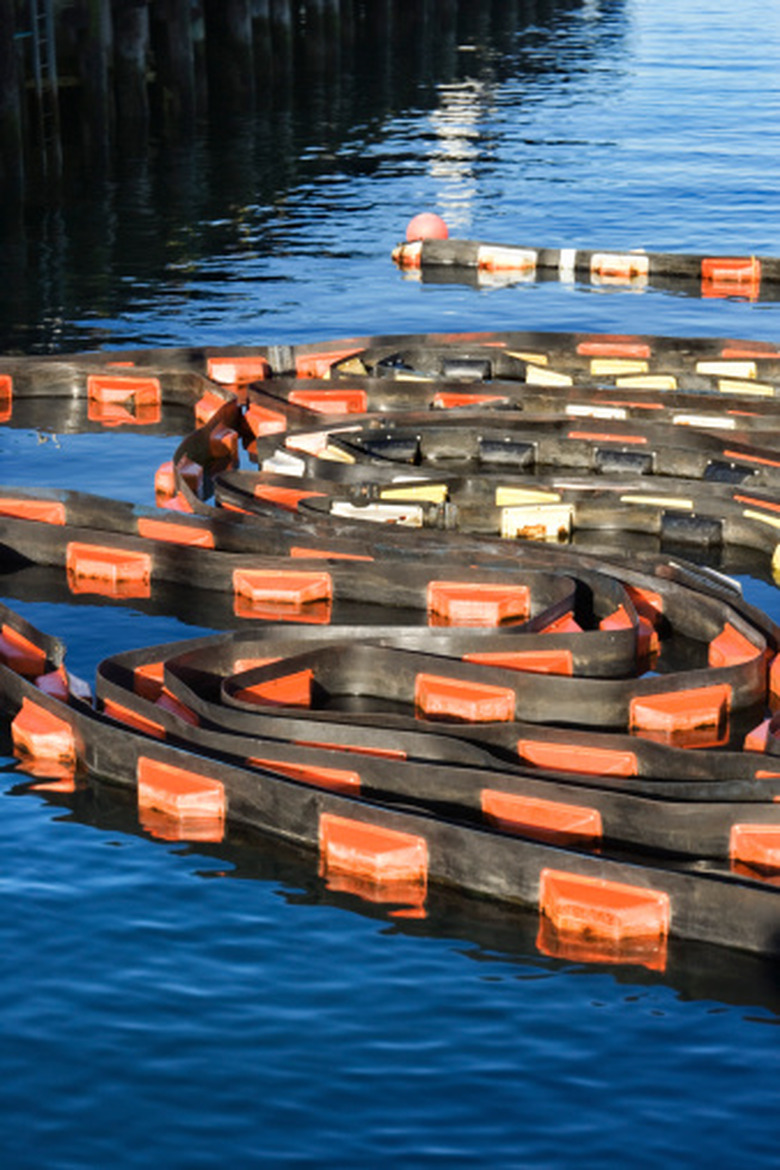What Chemicals Break Down Oil?
According to the Bren School of Environmental Science and Management at the University of California, Santa Barbara, 3 million metric tons of oil and oil-related chemicals enter the Earth's oceans every year. To manage cleanups, governments and businesses have created or found certain chemicals that break down oil into manageable or nonthreatening compounds.
Dispersants
Dispersants
Dispersants are chemicals used to break up oil spills, especially the dispersant chemical Corexit. These dispersants, according to Science Corps, an environmental research nonprofit, create micelles. Micelles are bubbles that envelop clumps of oil, especially oil that is clumped on the surface of water. According to the chemistry department at the University of Regensburg, dispersants also cause oil to clump into balls that can float and wash ashore for environmental management crews to pick up. Any oil clumps that sink into the ocean can eventually be broken down by seawater bacteria, which will consume the carbon in the oil.
Bioremediation
Bioremediation
Bioremediation, according to the Bren School, is using bacterial or microorganism colonies to eat the oil. These microscopic life-forms slowly consume the oil for food. Environmental management teams need to harness and cultivate large amounts of bacteria or fungi to attack oil spills. Often, fertilizer is added to the mix to help grow the bacteria or fungi that devour the oil spills.
Sun-Water Chemical Breakdown
Sun-Water Chemical Breakdown
A 2010 "Popular Mechanics" article says some oil can be broken down naturally by the sun's activity and warm water. Solar heat breaks down most chemicals with both radiation and light waves. Supplementing this process is that warm water helps thin out oil, allowing oil to stretch over a larger surface area. This makes the oil thin enough that sunlight can easily penetrate the oil matter. Over a period of weeks, the warm water and hot sun will have broken down the oil to simple hydrocarbons.
Cleaning Solutions
Cleaning Solutions
One of the saddest sights of an oil spill is animal life suffering. Many animals die or are physically harmed by the oil. When treating animals that are covered in oil, the best way to break down the oil is with soap and water. According to a 2010 article in Discovery News, most animals that are rescued alive from an oil spill are brought into sanitation labs. The animals are placed in warm water, and diluted cleaning agents are applied. This helps separate the oil from the skin, fur or feathers of the animal.
Cite This Article
MLA
Fitzpatrick, Mark. "What Chemicals Break Down Oil?" sciencing.com, https://www.sciencing.com/chemicals-break-down-oil-8485514/. 24 April 2017.
APA
Fitzpatrick, Mark. (2017, April 24). What Chemicals Break Down Oil?. sciencing.com. Retrieved from https://www.sciencing.com/chemicals-break-down-oil-8485514/
Chicago
Fitzpatrick, Mark. What Chemicals Break Down Oil? last modified August 30, 2022. https://www.sciencing.com/chemicals-break-down-oil-8485514/
